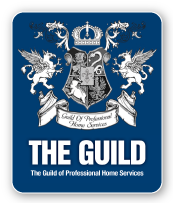

As with the Dart family, The Dart Bank is central to the history of Ingham County. Our Charter as a commercial bank dates from April 25, 1925. 1925 was also the year our long-time Chairman-CEO (Rollin Bashford Dart) was born.
Dart Bank has been considered a family bank since the beginning, but, in this connection it must be said that the ownership fabric of the bank has changed considerably through the years. The bank’s shares, today, are much more widely disbursed than in earlier days.
The bank was founded by Rollin Charles Dart (“R. C.”) and his son, Doc Campbell Dart. Prior to 1925, the bank operated as a private bank and was known as R. C. Dart & Co., Bankers. Rollin C. Dart served as the bank’s President until his death in the Fall of 1943. Son Doc then became President and C.E.O. and so served until his death in 1960.
The original investors and directors of the bank were: D. G. Barr, local area farmer and later to become the Mason Ford Automobile Dealer. Mr. Barr had earlier migrated, with his family, from Northern Ireland; C. L. Bashford, widely known fruit grower and nurseryman (also the father-in-law of Doc C. Dart); Doc Campbell Dart and his father, Rollin Charles Dart; E. A. Densmore, Attorney, Postmaster, and former Register of Deeds for Ingham County; Claude Edgar, well-known farmer, Aurelius Township Supervisor, and Manager of the Mason Co-op Shipping Association; Eugene R. Edgar (Claude’s brother), successful farmer, and Director of Field Work for the Michigan Sugar Beet Company; O. H. Freeland, M.D., physician serving the local populace; W. G. Grow, local dealer in Grain and Wool; and William S. Rhodes, manager of a firm known as Laboratory Products Company.
When the bank received its charter, as The Dart National Bank of Mason, it continued doing business in a building situated in the SE corner of Jefferson and Ash Streets (currently occupied by the Dart Insurance Agency), which had been in the Dart family for many years. In 1936, The Dart Bank acquired the assets and liabilities of the First State Savings Bank, and promptly moved into that bank’s far more commodious quarters, located in the NW corner of the same intersection.
 home
home
 contact
contact
 About Us
About Us
 Services
Services
 greaterlansing Homemove
greaterlansing Homemove


